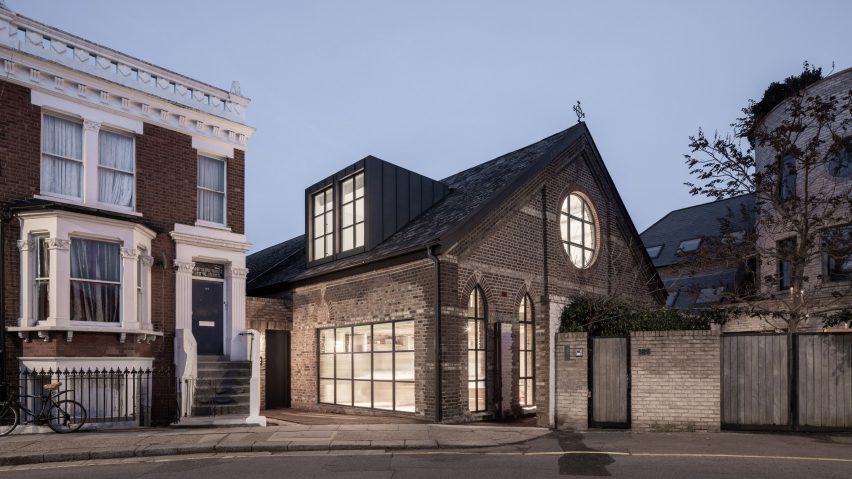
Tigg + Coll Architects moves studio into converted Victorian mission church
Tigg + Coll Architects has converted part of an abandoned mission church in west London into a flexible studio, with the rest of the building set to be turned into homes.
The studio, led by architects David Tigg and Rachel Coll, has completed the first phase of a redevelopment project that will see all of the Victorian church building in Brook Green brought back into use.
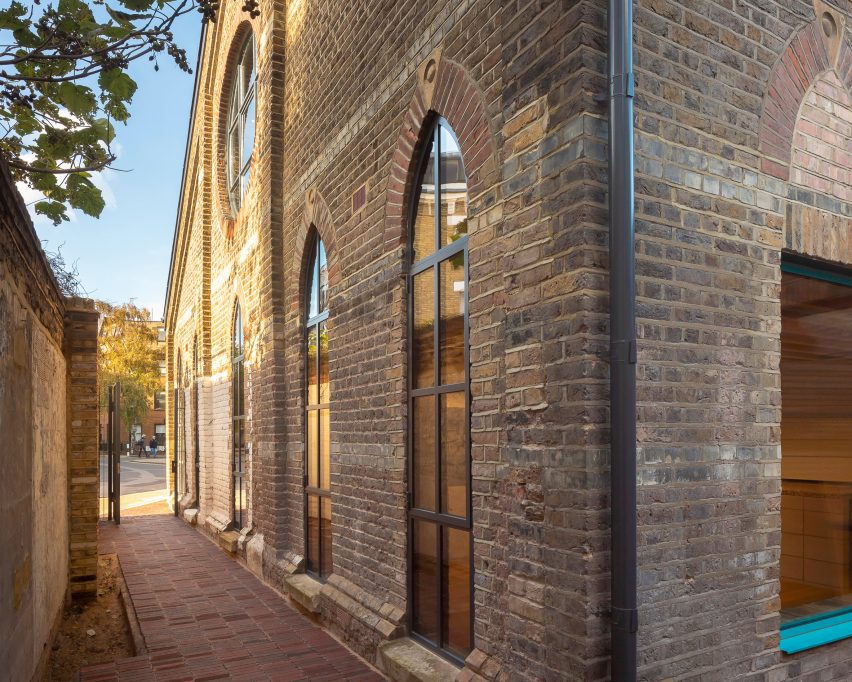
Taking up a third of the building volume, the two-storey Addison Studios features a first-floor workspace for the Tigg + Coll team and a ground-floor space that can be used for meetings or events.
This ground floor has a flexible layout that can function as a single space or separate zones. It includes a kitchen with an island counter, a materials library on wheels, meeting tables and pin-up areas.
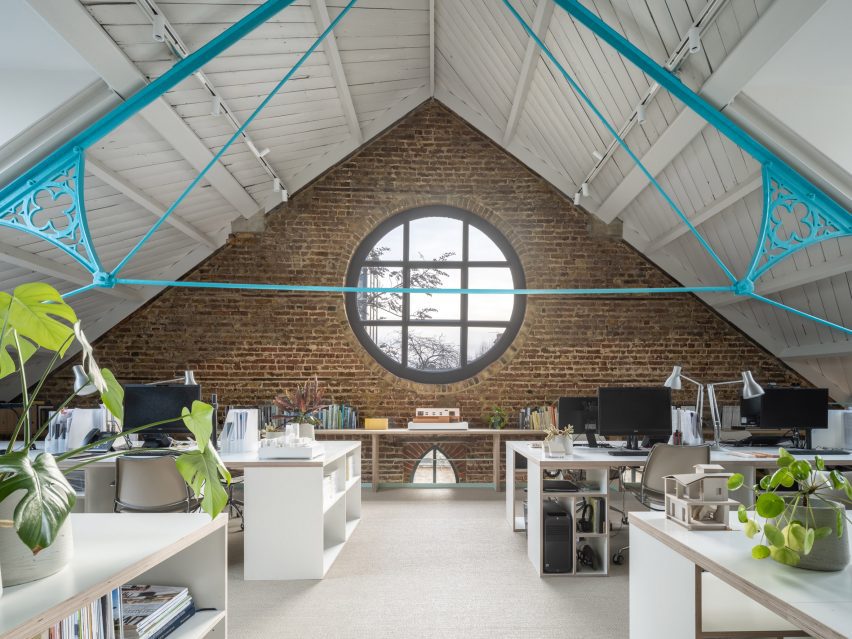
"We wanted to find a permanent home for our studio that could showcase our ethos and skill sets," Tigg told Dezeen.
"When we heard on the grapevine that this local landmark was up for sale and looking for someone to come in and bring it back to life, we were smitten."
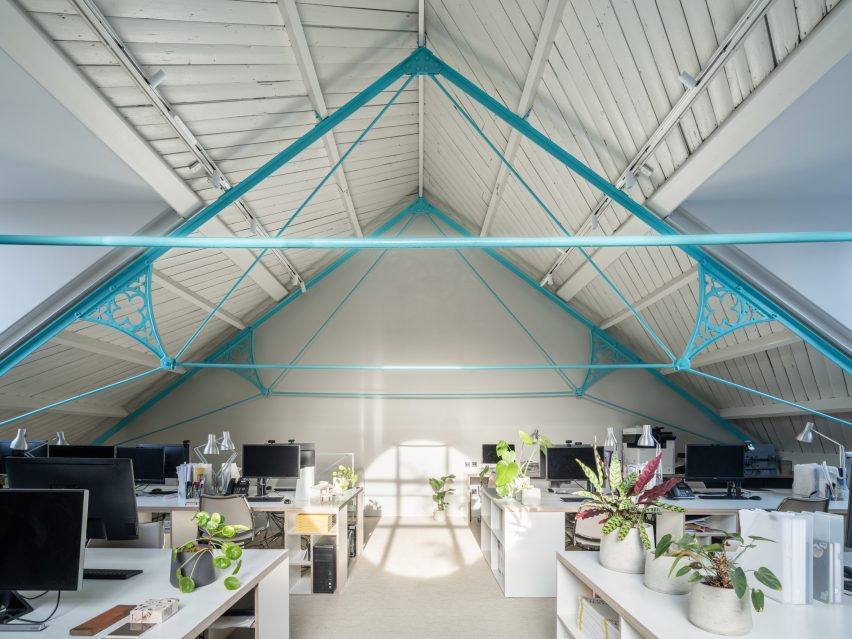
Located in a residential area, the building is believed to be 125 years old. It had been adapted many times, with numerous extensions added, and had fallen into disrepair.
"It had great bones but sadly had been slowly left to deteriorate, with ramshackle extensions and other alterations that took away from the simple and robust beauty of the existing building," said Tigg.
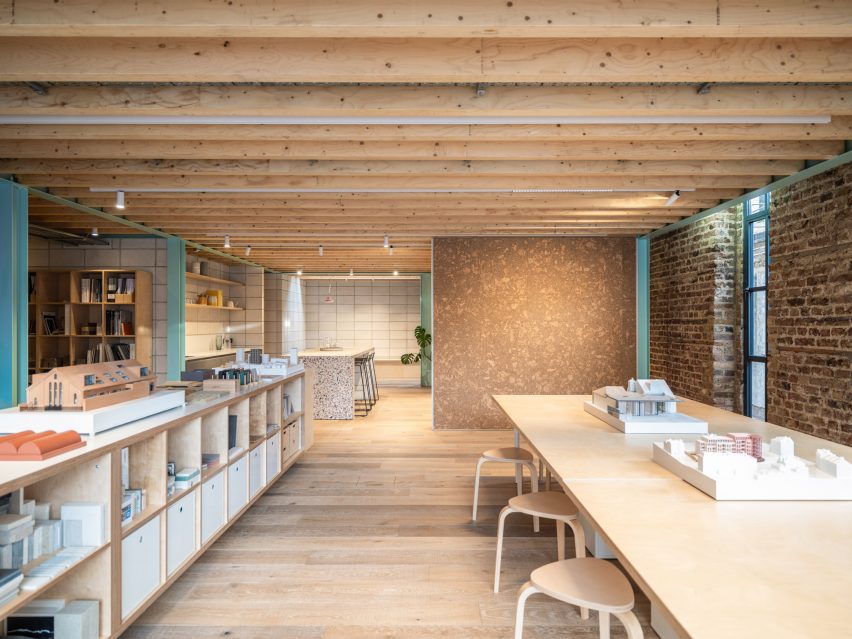
Tigg + Coll's approach was to strip the building back to its original structure and find clever ways of highlighting its history and architectural features.
Glazing was replaced including a previously concealed rose window that is now the focal point of the building's gabled end wall.
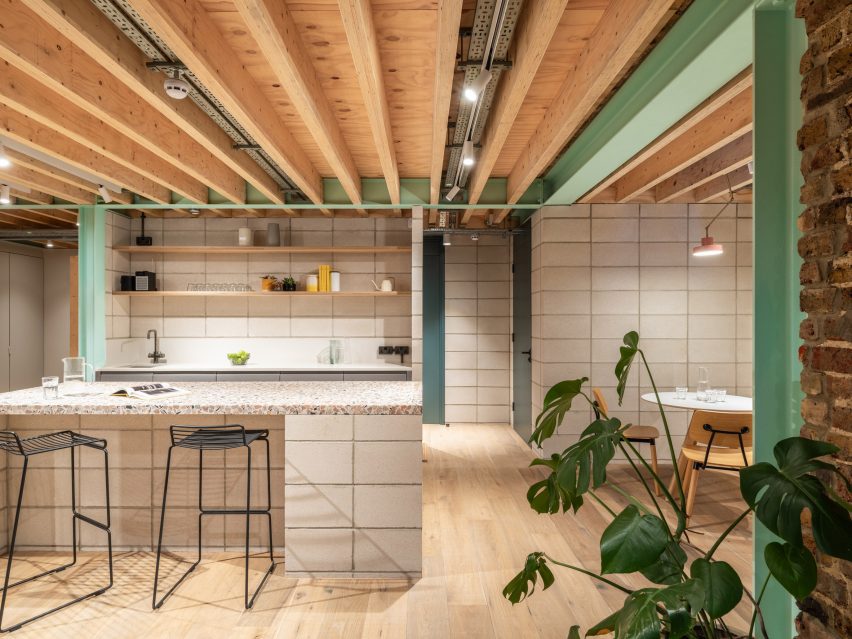
Brickwork walls were exposed but only repaired where necessary, while decorative steel trusses were uncovered and painted turquoise to stand out against the white-washed timber ceiling boards.
"We wanted to allow the reality of the existing building and its materiality to be central to the final finish," said Tigg.
"The principle was to pair it back and make the accents very clear," he continued. "Nothing was to be covered up if we could help it."
"Any existing features not being restored were either relocated to replace damaged or missing elements or left in place and infilled to create a visible collage or quasi memorial of the building's history."
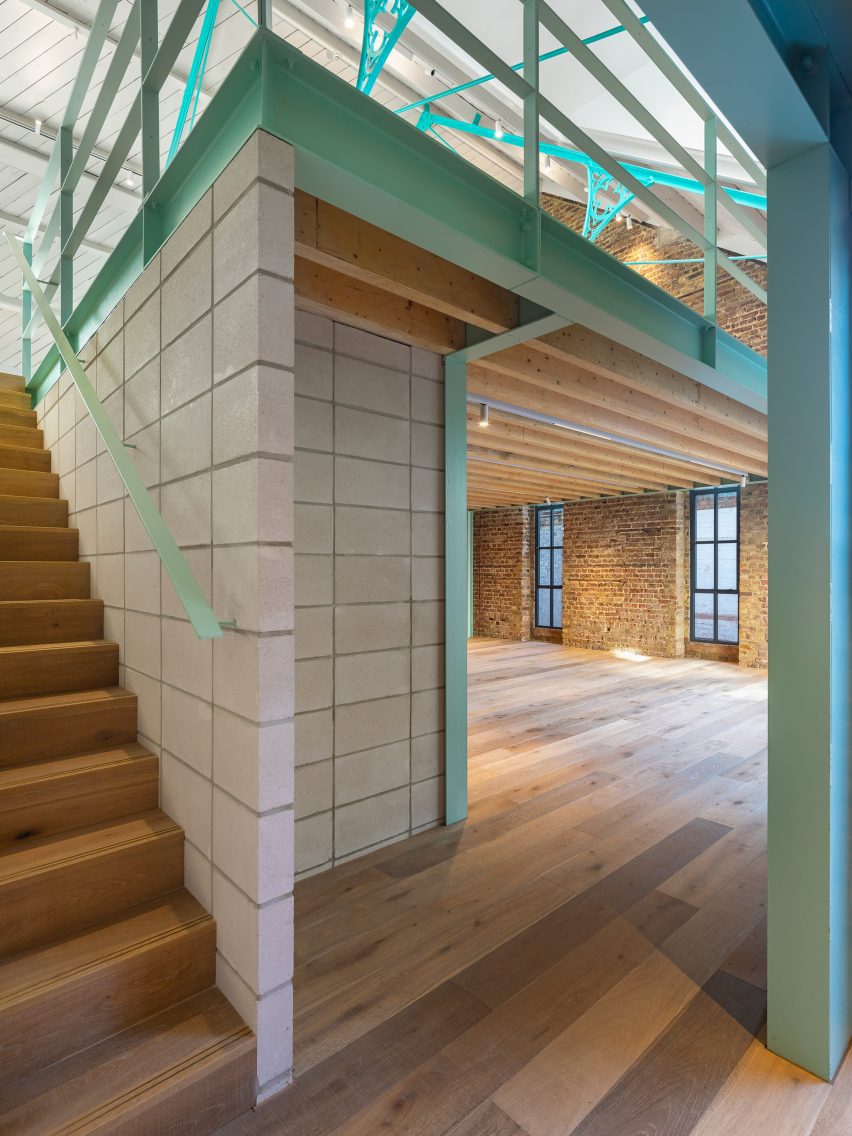
A new mezzanine was installed to provide the first-floor workspace with an exposed structure formed of blockwork, glulam timber joists and steel I-beams coloured in a slightly paler shade of turquoise to the trusses above.
The floor is set back from the windows, creating a clear divide between old and new while new skylights increase the overall level of daylight that enters.
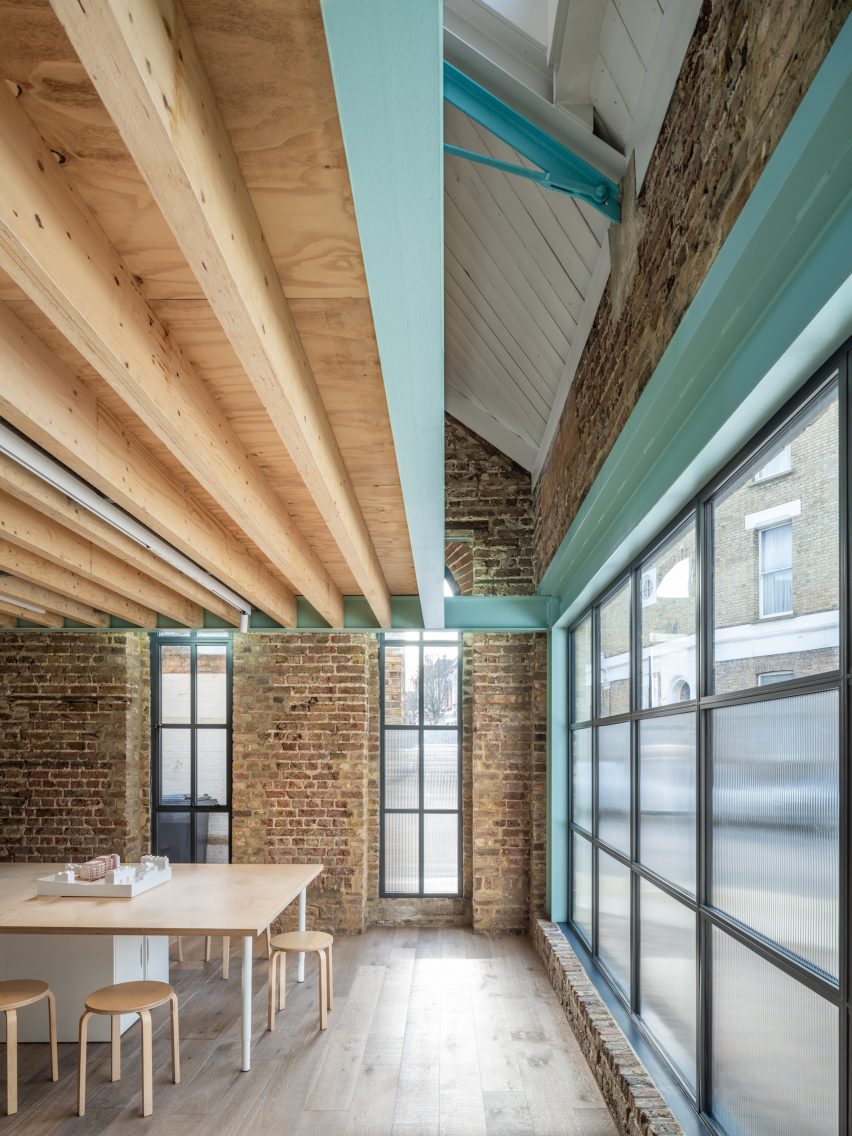
Several new materials are introduced on the ground floor. The pin-up wall is formed of cork, while the kitchen counter is a custom terrazzo made using some of the site's demolition waste.
This space allows the Tigg + Coll team to come together for group lunches, presentations or collaborative work. It also provides opportunities for both video calls and formal meetings and could be used for events.
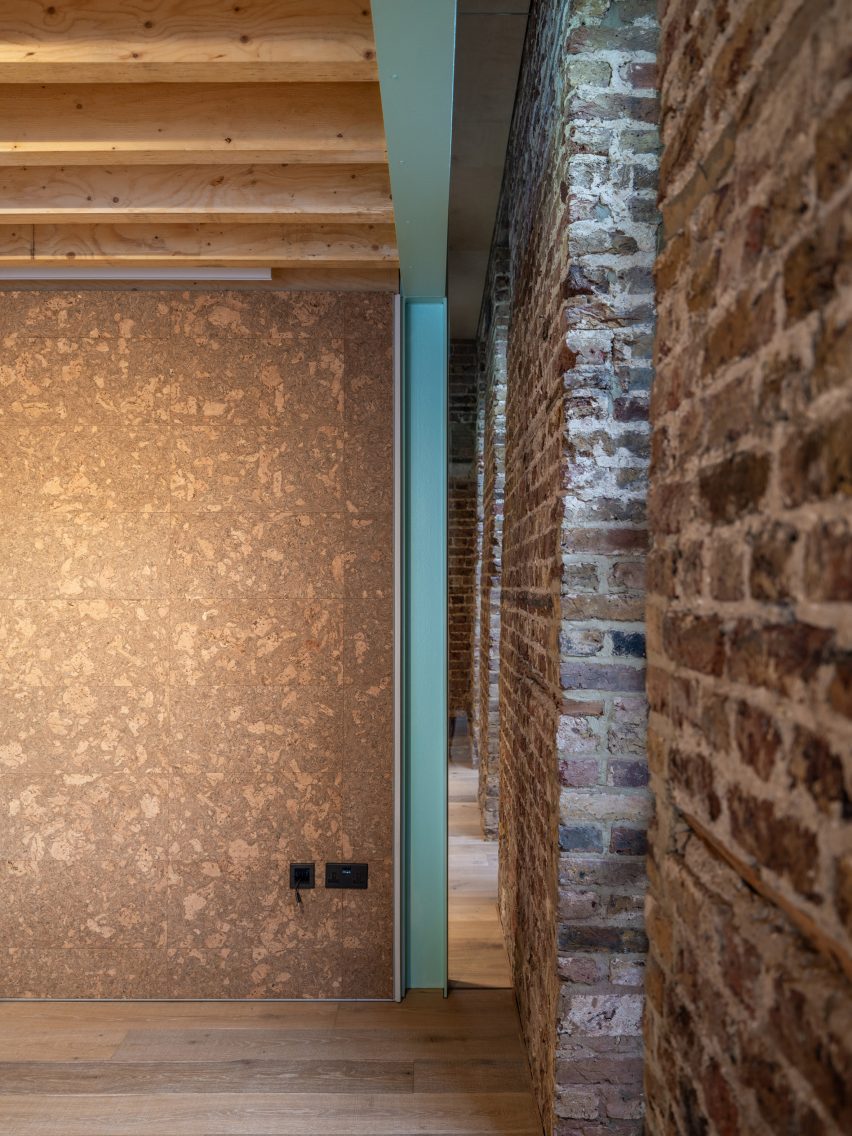
"We wanted a calm office that was uplifting, inspirational and unlike a typical work environment," said Tigg.
"You can spend time conscientiously working on the mezzanine and then get away from the screen time with a break downstairs. It really helps with mental balance throughout the day."
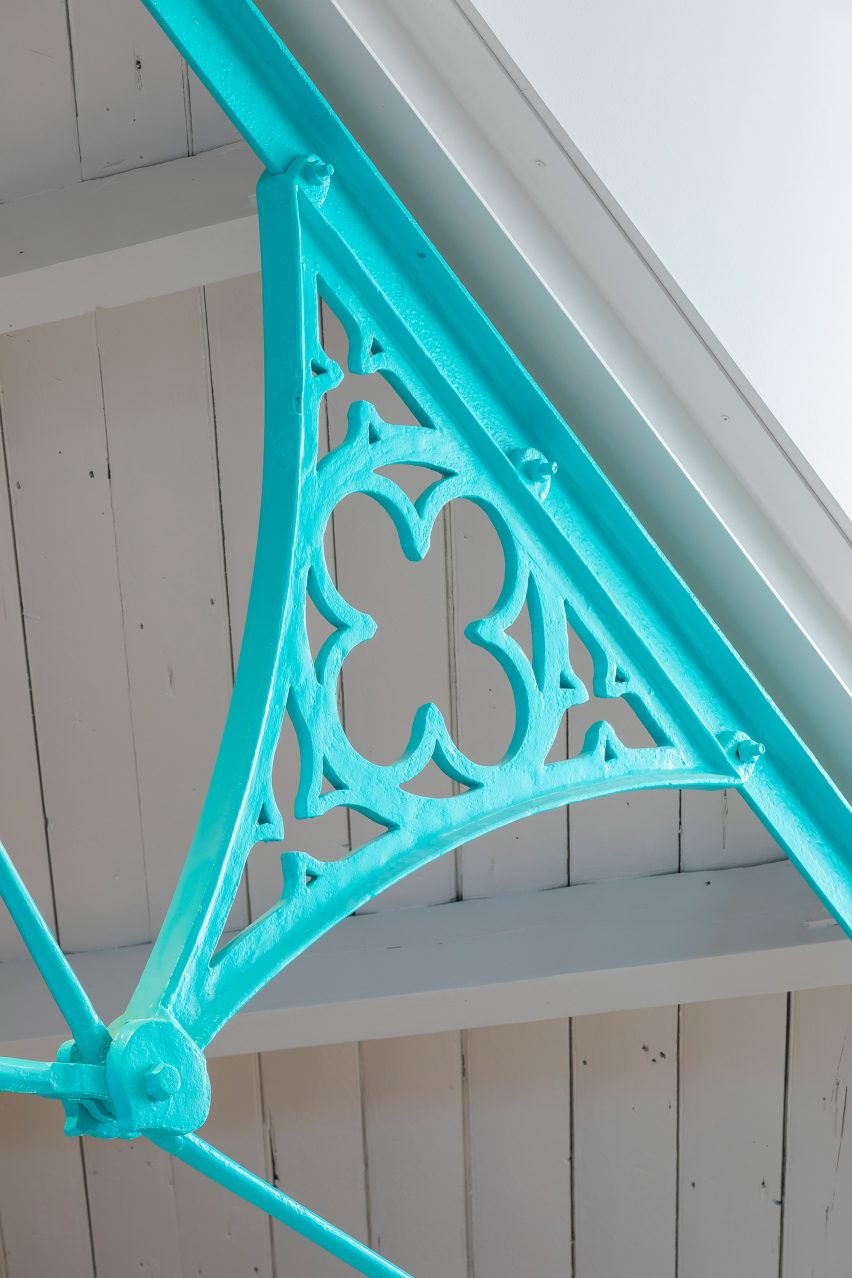
Tigg and Coll founded their studio in 2008. They specialise in residential projects, across private homes, housing developments, student living and co-living.
Past projects include House for Theo + Oskar, designed to support the needs of two children with a rare muscular disorder, and Chapter Living King's Cross, an innovative student housing project.
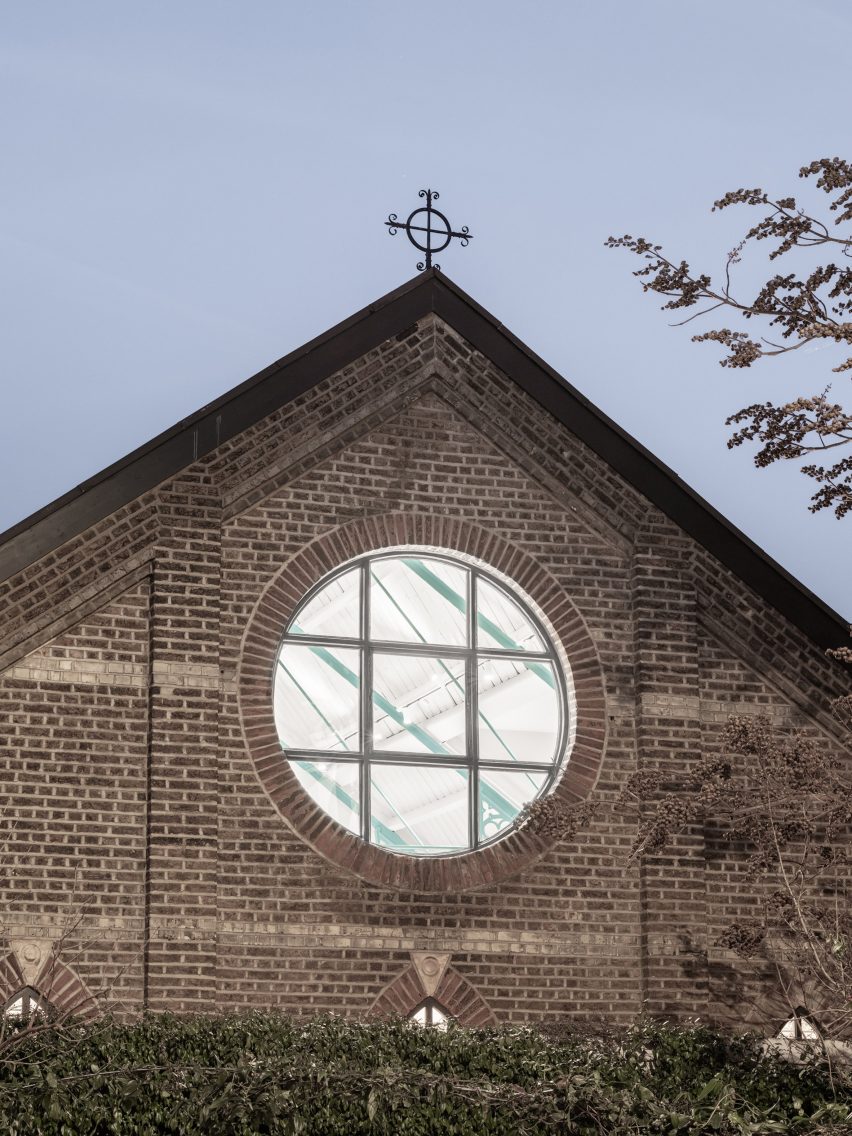
Now that they have moved into Addison Studios, the architects are set to move forward with the rest of the conversion.
"We are in an age where it is more important than ever to showcase how the principle of retrofit can not only be a pragmatic and cost-effective choice, but also create immensely warm, characterful and beautiful spaces for working, living and just generally enjoying," Tigg concluded.
The photography is by James Retief and Peter Landers.